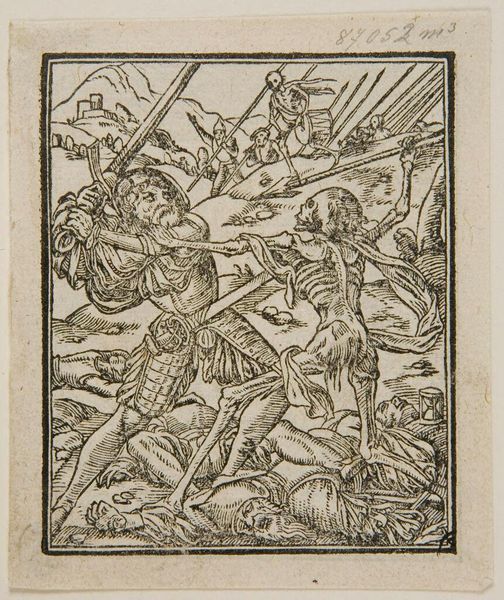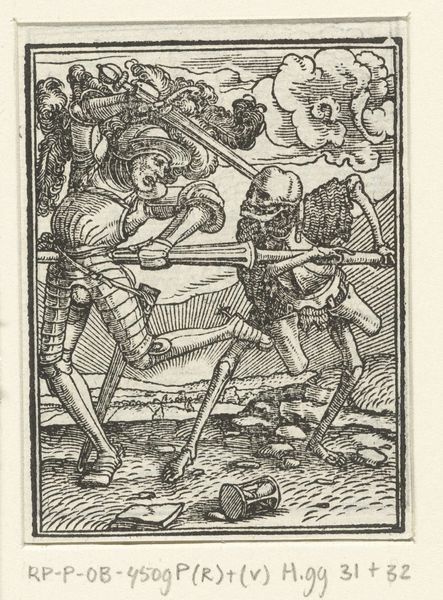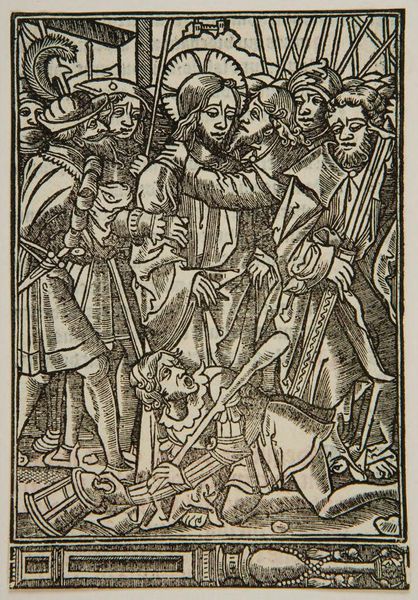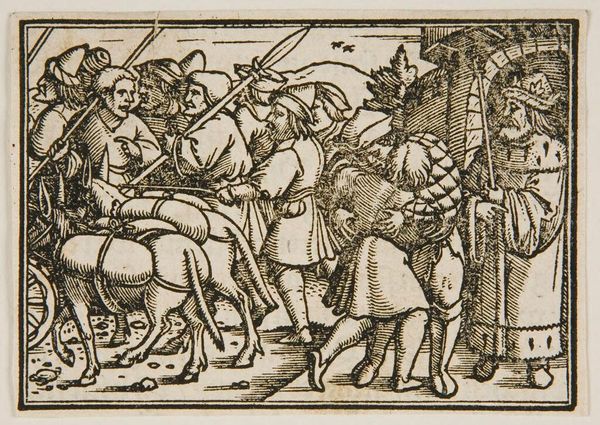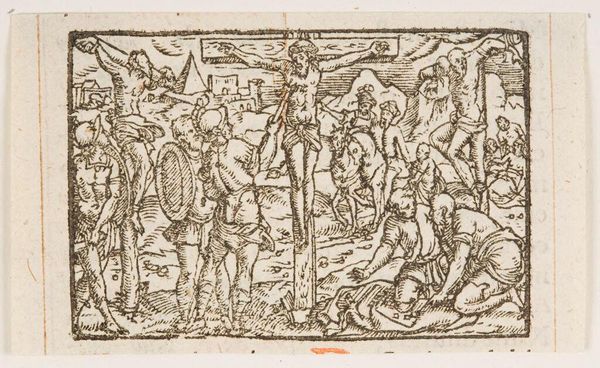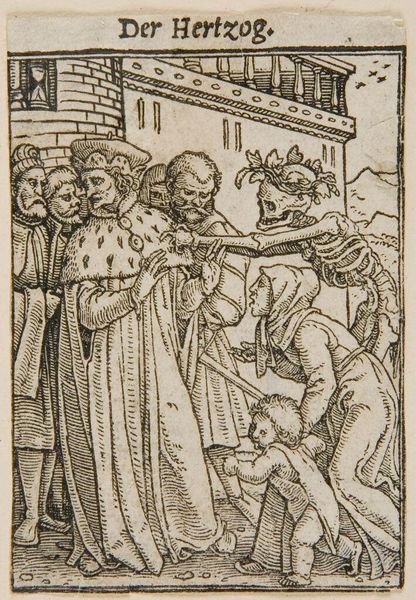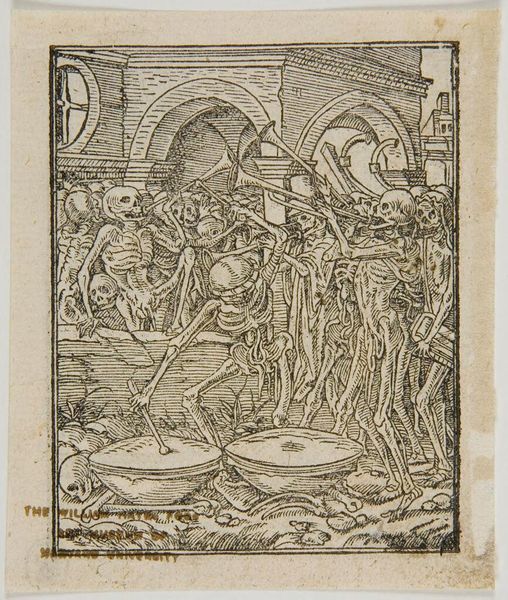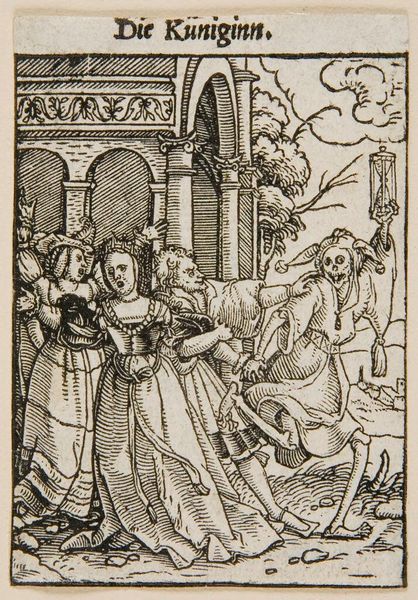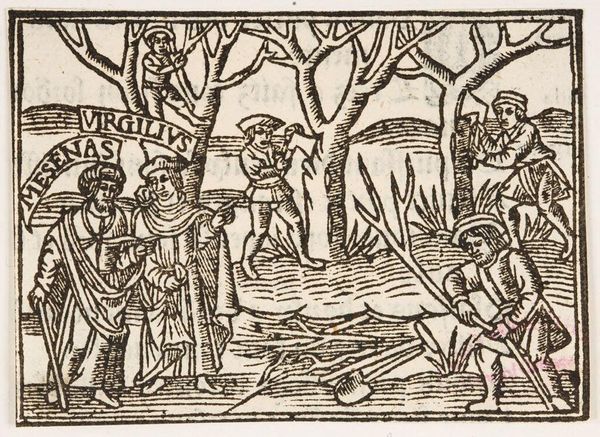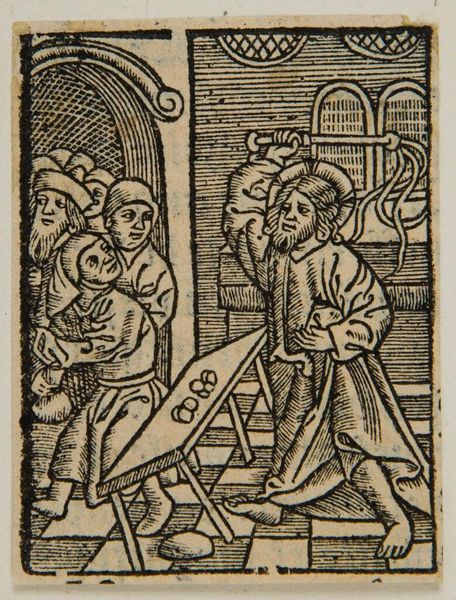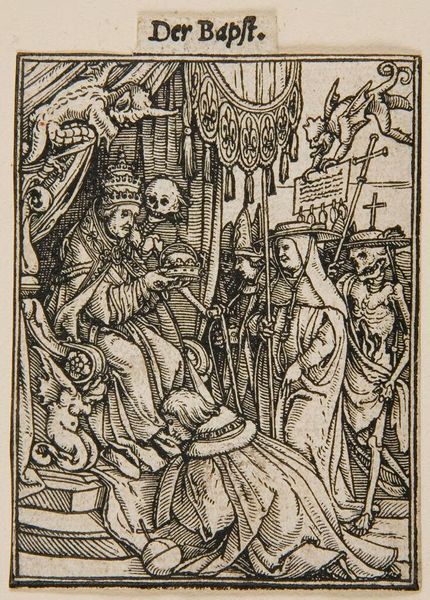
Copyright: CC0 1.0
Curator: The sheer density of the figures creates a sense of claustrophobia. It feels…inevitable. Editor: Indeed. What you're seeing is "Bones of All Men," a woodcut print by Hans Holbein the Younger. Though undated, it’s held at the Harvard Art Museums. Holbein masterfully employs stark lines to depict the Dance of Death. Curator: The skeleton figures, some playing instruments, really drive home the theme of mortality as a universal equalizer. Editor: Holbein made these prints at a time of great social upheaval. The plague was rampant, and religious tensions were high. The Dance of Death was a potent symbol reminding everyone, regardless of status, of death's relentless march. It’s a stark warning about power structures and the inevitability of death. Curator: Yes, seeing these symbols together emphasizes not just mortality, but also a kind of performance or ritual around death—cultural memory, if you will. It resonates even today, reminding us that death is part of life. Editor: It speaks to the cyclical nature of life and death and encourages us to confront uncomfortable truths about our existence and societies.
Comments
No comments
Be the first to comment and join the conversation on the ultimate creative platform.
